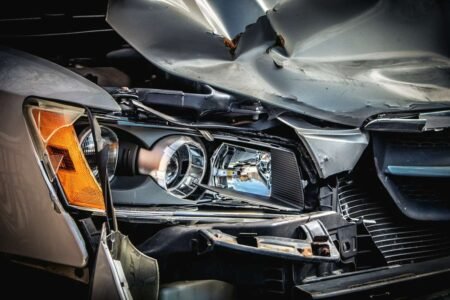The European Commission on 16 December took a major step towards the deployment and use of Intelligent Transport Systems (ITS) in road transport. ITS can significantly contribute to a cleaner, safer and more efficient transport system. The action plan adopted puts forward a set of concrete measures and a Directive laying down the framework for their implementation.
Advertisement
Typical and well known ITS application are the so-called “GPS” navigation systems in our cars, the traffic information and travel time estimations we receive in our car radios or via the variable message signs displayed across modern motorways and ring roads, or real-time arrival information on bus or tram stations.
But, ITS are much more than that: it aims at managing traffic in order to increase the safety of travellers and to spare the time they loose in congestion. It also aims at providing travellers with all the benefits of new technologies inside their vehicles or in public transport.
The ITS Action Plan aims at fostering the development of ITS for all citizens of Europe, for instance harmonizing the different systems in place to allow every country to benefit from the progress developed in others, and ensuring that systems onboard vehicles will work all over Europe, bringing down as much as possible borders for travellers and for professional drivers.
Interoperability of systems is thus one of the primary objectives of the ITS Action Plan. For instance, it is not acceptable anymore to see Member States of the EU implementing new proprietary road charging systems. Drivers should have only one system for whole Europe and not one per Member State.
A single ITS equipment onboard vehicles, performing all tasks required by passengers for driving, navigation, entertainment) should be implemented.
Additional functionalities could be integrated later, for instance for in-vehicle safety, vehicle monitoring, and entertainment. Professional users could also benefit from specific applications like tracking and tracing of vehicles and cargoes, especially to secure transport of dangerous goods or to track stolen vehicles.
Especially in urban environment travellers may expect from ITS technology better and more reliable information on alternative transport modes, which will help promoting the necessary shift to less polluting transport modes.
Furthermore, the car will become an integrated part of the global transport system, providing to the road infrastructure managers the data they need for a more efficient management of the traffic, whilst respecting fully the privacy of data of the users.
Until now, there has been no coherent European framework for the deployment and use of ITS in the road transport.
For other modes of transportation, we have already frameworks in place: SESAR, a new generation of air traffic management in air transport, the River Information Services in the field of inland waterway transport, the SafeSeaNet and the Vessel Traffic Monitoring and Information Systems in shipping and the European Rail Traffic Management System in the rail sector.
The ITS Action Plan targets today the road sector. But it also includes initiatives to ensure and improve the interconnectivity of road transport with other transport modes.
This action aims at fostering the development of Europe-wide services providing real-time on trip traffic and travel information: travel time, alternative roads, navigation advices, congestions and accidents, weather forecasts ….
The equality of access by private service operators of data measured on the networks are addressed for the first time. Traffic regulations and recommended routes for heavy goods vehicles are also relevant objectives. The improvement and regular updates of digital maps through cooperation between Member States, road concessionaires and digital maps providers will also be addressed. Another initiative focuses on the promotion of multi-modal door-to-door journey planners.
Good traffic management, e.g. dynamic speed limits or route diversions, can reduce the congestion on the roads. To ensure a seamless service for the user, traffic management has to work across borders, which is of particular importance to long-distance freight traffic. Traffic centres need to be better connected.
This action aims at developing cooperation between regional authorities to improve the quality of traffic management. For instance, this cooperation between regions of different countries under the umbrella of EC projects, has already allowed to limit the consequences of bad weather conditions on traffic: road operators of one country were able within 30 minutes to start stopping vehicles before they could be stuck on snowy motorways abroad, offering them parking areas during several days, and advising departing vehicles to stay home.
Also there is often a lack of coordination of urban with interurban traffic management. Common procedures and specifications are needed. In support of freight transport, the concept of eFreight will be further strengthened by ITS. eFreight is the vision of a paperless electronic flow of information with the physical flow of goods. Further actions will create a specific ITS architecture for urban transport and finalise the interoperability of the European electronic road toll systems
The Commission will address the further development of safety and security-related systems in road transport. The most promising systems in terms of saving lives are collision warning and avoidance, electronic stability control (ESC) lane, keeping support and speed alert. All of these are already available or soon will.
The Action Plan will promote their installation in new vehicles and will consider the retrofitting” aspect. The introduction of an electronic system automatically calling emergency services in case of an accident (eCall) and a regulatory framework to ensure safe on-board human-machine interface, including the mobile devices taken into the vehicle, are other important points. Best practice guidelines are foreseen on applications for vulnerable road users (pedestrians, cyclists etc.) and for secure truck parking on highways.
Electronic communication and navigation systems are becoming standard equipment in our cars. It very likely that even more electronic devices will be added in the future, e.g. for electronic toll collection and the emergency call functionality eCall.
With these many different equipments we are not only facing a growing diversion of the driver’s attention but also the problem of missing common standards for the interoperability/interconnection with the car, with existing and upcoming infrastructure systems and the services which supply traffic and traveller information.
The Commission proposes a streamlining and integration of these applications into a standardised open in-vehicle platform, aiming to increase the safety and functionality of the car equipment, reduce costs and enable an easy plug and play usability of the personal electronic equipment in the car.
In parallel, the functional specifications for the infrastructure-to-infrastructure, vehicle-to-infrastructure and vehicle-to-vehicle communication will be defined. The relevant standardisation issues will also be addressed.
The Commission will work with stakeholders to address the importance of security of ITS related data and the protection of personal data, based on the relevant directives. Also liability issues pertaining the road information and traffic data will be addressed.
The Commission proposes a legal framework for the Europe-wide deployment of ITS.
A European ITS Committee will be set up, composed of Member States’ representatives, as well as a European ITS Advisory Group, formed by representatives of user associations, transport operators, industry, social partners, professional organisations, local authorities and existing fora. Both will advise the Commission on technical and user aspects.
Specific rules will be worked upon for an ITS infrastructure assessment as a precondition for EU or national funding for building or operating infrastructure.
The deployment and use of ITS in the urban context will be discussed with Member States and regional and local governments.
Since 1988, the Commission has financed dedicated research and development programmes on ITS, which have delivered valuable results and plenty of recommendations. These projects have provided a basis for technological break-troughs and basic co-ordination, and first, in most cases fragmented, deployment. But the time has come that we pass from recommendations to actions to exploit the full potential of ITS in the field of safety, reducing congestion and minimizing the environmental impact of the road system.
In the Commission’s view a legislative proposal is needed to promote actions that will remove persistent bottlenecks and will enable a broader and coordinated uptake of ITS for road.
Some examples where voluntary approaches are not always sufficient:
- Today, a truck driver, going from Barcelona to Frankfurt on the European motorway network, carries not only a GSM and a navigation system on board but also up to three different electronic devices for the toll charge in the Member States he crosses!
- To avoid transit traffic in residential areas, the Commission recommended in 2001 (2001/551/EC) to publish details on road categories of the entire road network as well as details on areas where traffic should be limited. But, only few local and national authorities implemented this recommendation.
- Drivers equipped with navigation devices are making use of the entire road network. Thus, heavy trucks are often guided onto highly vulnerable and inappropriate roads (e.g. heavy vehicle or coaches getting stuck inside small towns, passing near schools or taking steep slopes).
The new Directive will allow a coordinated and fast implementation of ITS measures to avoid or reduce such problems.
Currently, all satellite based navigation facilities are using the American GPS system. Europe is now entering in the world of satellite navigation. Its first product, EGNOS ,and then Galileo as of 2013, are important for the future deployment of ITS in Europe and will improve the accuracy and the reliability of the navigation systems.
The expected accuracy of Galileo, up to 10 cm, will trigger a whole range of new applications and will also allow developing a new ITS sector, enhancing safety through in-car applications (e.g. lane keeping).
Long before that, the first visible impact of EGNOS and GALILEO will be the development of applications for goods tracking and tracing using state-of-the-art technologies (within our “eFreight” concept). It will also foster the development and deployment of location based commercial and public services.
EGNOS is already operational, covering most of Europe.
Work will start immediately.
Each action area has specific action points and a timetable.
The present Action Plan covers the period 2009 2014 and a mid-term review will take place in 2012/13.
The ITS Action Plan will contribute to a more efficient, cleaner and safer transport in Europe, both for passengers and freight.
It will not only help to reduce congestion on our roads and reduce road fatalities, but will also contribute to reduce greenhouse gas emissions. It will help lessen economic losses due to traffic congestion.
Also, people with reduced mobility and elderly persons will be able to benefit.
Relatively small investments in ITS would allow a better use of existing infrastructure and would insofar be much more cost effective than building new infrastructure or enlarging existing one. At the same time, the environmental impact would be much lower.
Thanks to the Action Plan, the industry will benefit from a clear policy and a potential market for ITS services and applications. This will not only foster the creation of new technologies and products but also lead to new jobs in the ITS field.
Consumers will benefit from a wider range of services and products. They will increase the safety, comfort and efficiency of driving at a lower price due to standardisation and higher production volumes in the global European market.
Road users will experience less congestion, less accidents and better information on the use of non road and public transport options. This will finally lead to a more balanced use of all transport modes.







